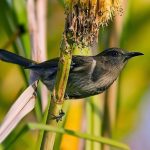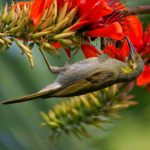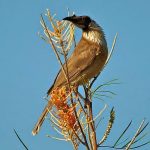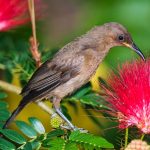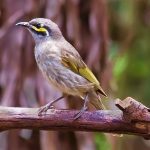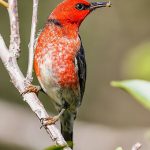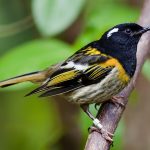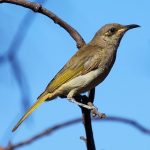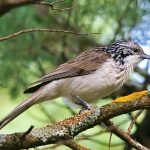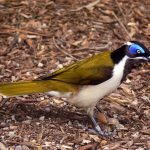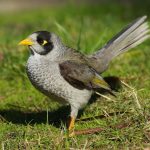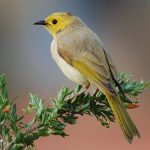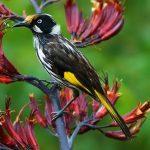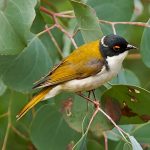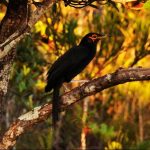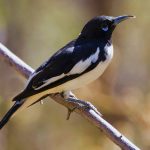Brown-backed honeyeater

 |
| (Photo from Wikipedia) |
Common name:
brown-backed honeyeater (en); melífago-modesto (pt); méliphage modeste (fr); mielero modesto (es); sumpfhonigfresser (de)
Taxonomy:
Order Passeriformes
Family Meliphagidae
Range:
This species is found in southern New Guinea and in north-eastern Queensland, Australia and adjacent islands.
Size:
These birds are 11 cm long and weigh 11-12 g.
Habitat:
These birds are mostly found in Melaleuca swamps and woodlands, but also occur in mangroves, rainforests, riverine vegetation, scrubland along creeks in dry woodlands and sometimes in open country.
Diet:
They eat the nectar of various plants, as well as insects and other small invertebrates.
Breeding:
Brown-backed honeyeaters breed in August-December. The nest is a domed or roofed pensile structure, made of Melaleuca bark and bound together with spider webs. The nest is placed at the end of a branch of a tree or scrub, 1-8 m above the ground and sometimes over water. The female lays 1-3 eggs which are incubated for 14-16 days. The chicks fledge 12-15 days after hatching.
Conservation:
IUCN status – LC (Least concern)
This species has a large breeding range and is described as moderately common. The population is suspected to be stable in the absence of evidence for any declines or substantial threats.
